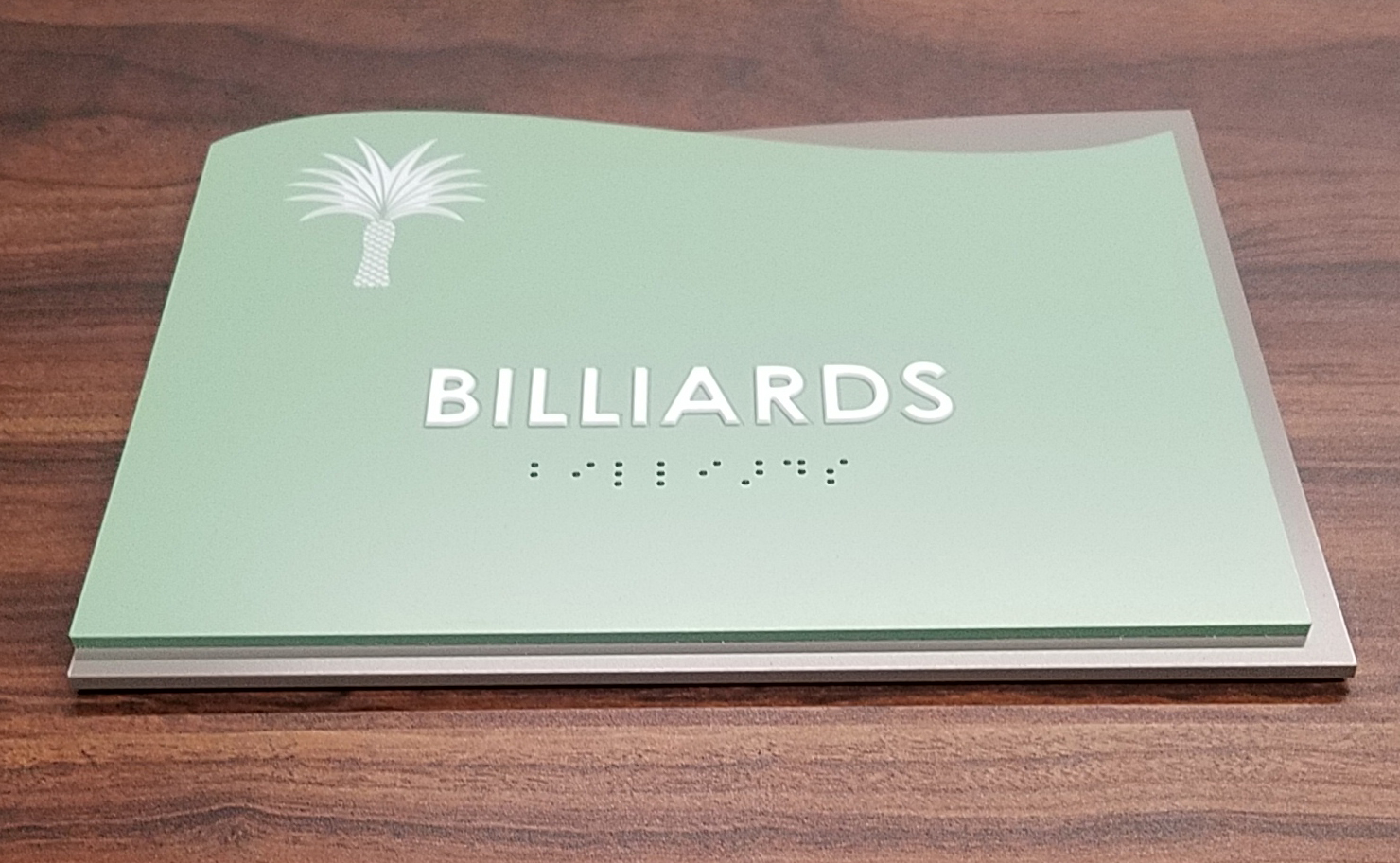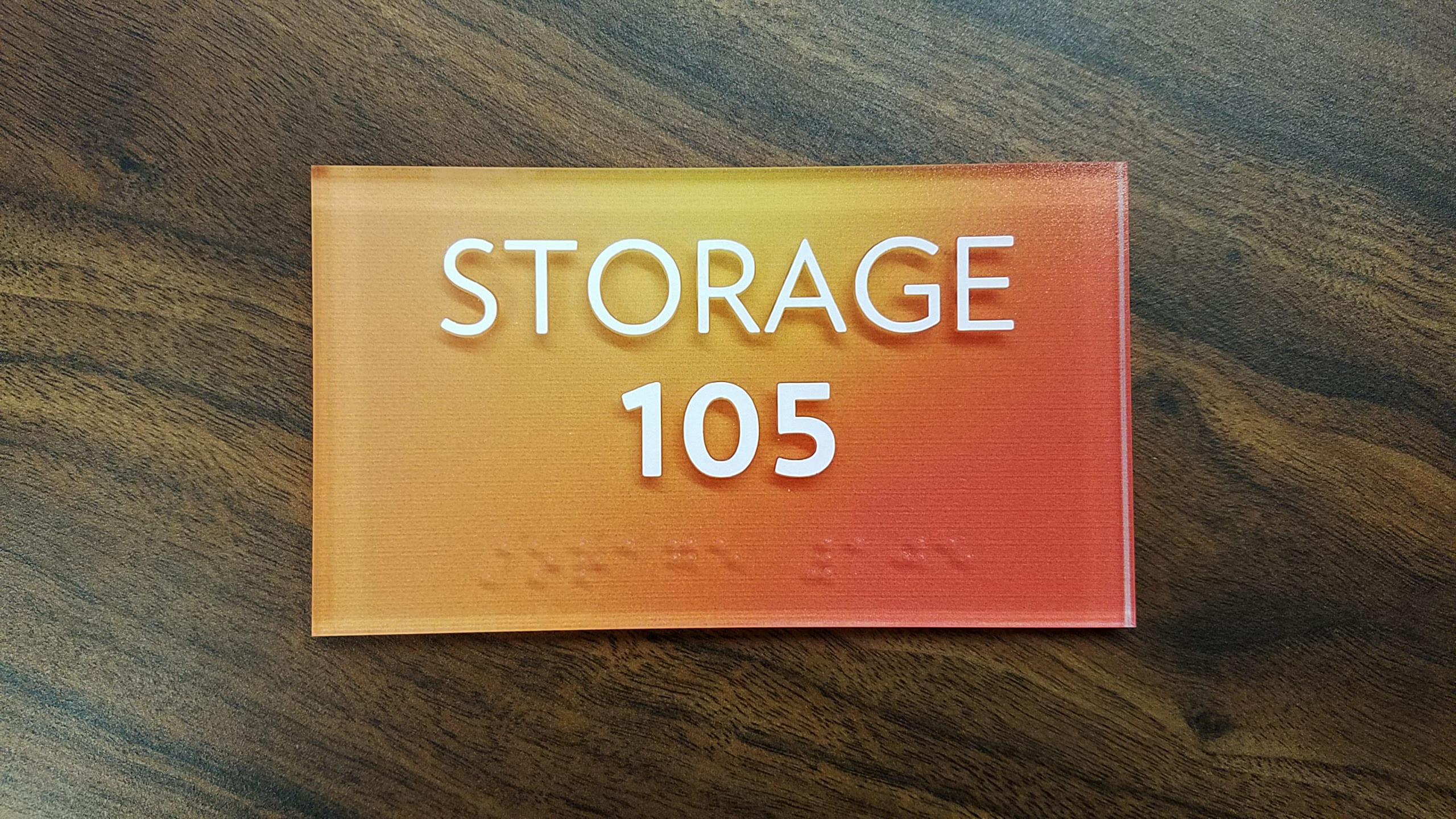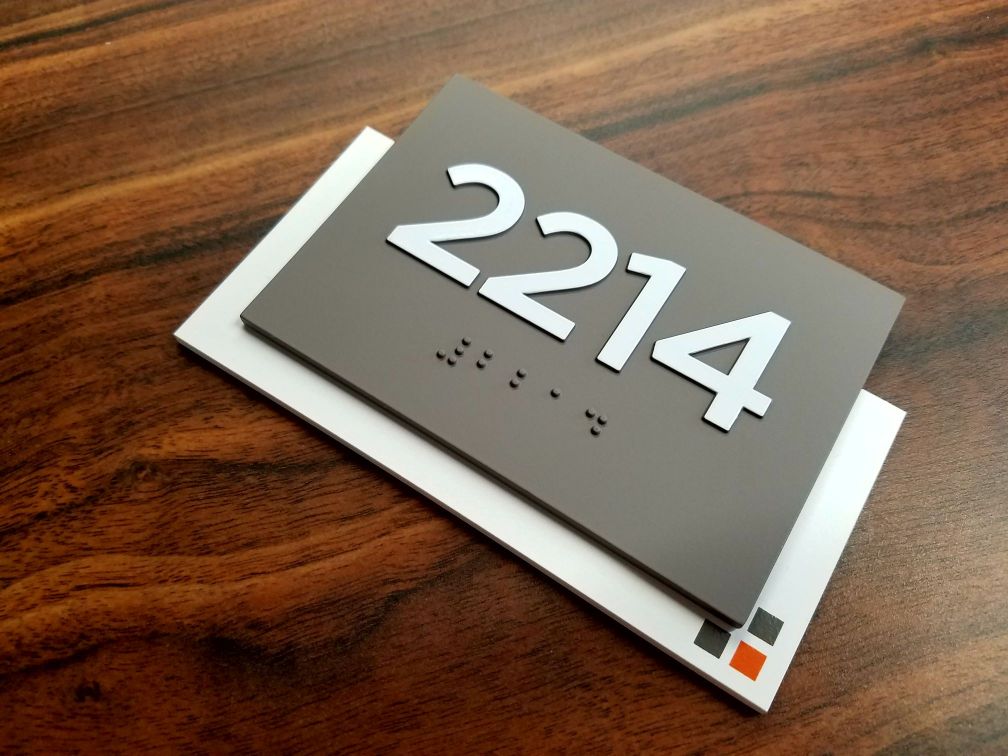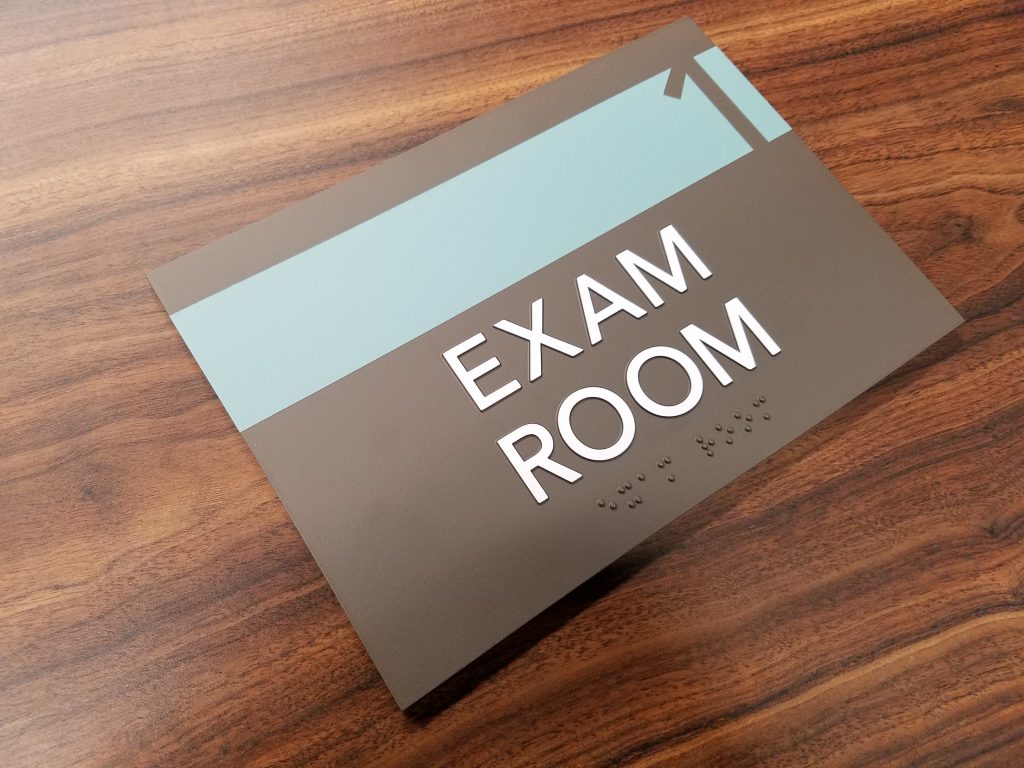Get Custom ADA Compliant Signage from Bell Company, Inc.
With more than 75 years in the sign manufacturing business, Bell Company, Inc. has become synonymous with custom ADA-compliant signs. Creating customized signs that meet ADA requirements as well as wayfinding architectural signage to make businesses more inclusive and accessible is what we do—and we’re pretty good at it to boot.



What Are ADA Signs?
ADA signs are signs that comply with the specific requirements outlined in the Americans with Disabilities Act, which was signed into law in 1990 in the U.S.
Americans with Disabilities Act
The ADA protects people with disabilities from discrimination in all public areas and aims to guarantee that they have the same access to rights and resources as anyone else. This includes fair access to public accommodations, jobs, transportation, state and local government facilities, and telecommunications. Public accommodations must adhere to fundamental nondiscrimination criteria that prevent exclusion, segregation, and unequal treatment under ADA Title III for Public Accommodations and Commercial Facilities.
What Are ADA Compliant Signs Used for?
ADA compliant signs help people who are visually impaired navigate public buildings and facilities safely. Without them, it would be difficult, and even dangerous, for them to identify the spaces around them. The ADA Accessibility Guidelines mandate that the majority of architectural signs must comply with specific standards for this reason. Examples of ADA signage include building entrance and exit signs, restroom, elevator, and stair signs, room identification signs, and accessibility signs.
What Makes a Sign ADA Compliant?
Braille signs often come to mind when people think of ADA compliant signs, but there’s more to ADA sign requirements than Braille and raised characters. The ADA mentions three main categories of requirements for ADA compliance standards:
- Whether or not a sign is required in a specific situation or building.
- Requirements for the sign’s design, which can include the sign’s font, letter, character spacing, and more.
- The exact location for a sign installation, including details such as height requirements and where a sign may not be installed.
Is an ADA Sign Required?
Public facilities, buildings, and accommodations—and permanent rooms inside them—in the United States must have ADA compliant signs. Under ADA Title III there are 12 building categories labeled for public accommodations:
- Hotels, motels, resorts, and any lodging.
- Casinos, event venues, convention centers, restaurants, and bars.
- Schools, universities, libraries, and museums.
- Hospitals, assisted living, and nursing home facilities.
- Commercial buildings, office spaces, and more.
ADA signage is not required if its use is less than seven days, in parking lots, and for private use areas.
What Are ADA Compliant Sign Design Requirements?
All ADA signage doesn’t have to be the same. At Bell Company Inc., we have the tools to create amazing, custom ADA signs for your space that make it welcoming, easy to navigate, and on brand. With Bell Company, you’re in good hands thanks to our extensive knowledge of ADA requirements and our hands-on experience designing visually pleasing, purpose-driven custom signs.
- Design
- To make signs as easy to read as possible, ADA signs should have a matte, non-glare finish and a high-contrast ratio between the background and raised text.
- Text
- Normal text characters/lettering must be between 5/8″ and 2″.
- A minimum of 3/8″ clearance on all sides of the Braille translation.
- Use a clear, distinguishable font. No italics, scripts, or other lettering styles that are hard to read.
What Are ADA Compliant Sign Location Requirements?
An ADA sign is required in the presence of a permanent space that will retain the same function for seven or more days. This signage is especially necessary for areas pertaining to safety, including for elevators, fire exits, stairways, and entrances.
- Install ADA signs with Braille and tactile elements on the latch side of the door leading to the identified room.
- The bottom of the lowest row of text should be at least 48″ above the floor, while the top of the highest text should not exceed 60″.
- Generally, you shouldn’t install ADA signs directly on a door. However, there are exceptions and guidelines for how to work around this rule, if necessary.



Braille Signs
Braille ADA signs come with their own unique signage requirements to help visually impaired individuals safely and confidently navigate public spaces. Every message displayed on an ADA sign must have a corresponding translation in Grade II Braille. This is a shorthand form of Grade I Braille that incorporates contractions and single characters to represent complete words.
At Bell Company, we create custom ADA signs and Braille signs that enable your space to be both visually appealing and inclusive. We have a team of Braille experts who use Duxbury Braille Translation Software to guarantee accurate translation and ADA compliance.
Create Custom ADA Signs and Braille Signs with Bell Company, Inc.
With 75+ years of experience creating custom ADA signage and Braille signs, we’ve become a leader in manufacturing ADA signs for businesses of every shape and size and throughout various industries. Our expertise means you can rest assured that your space is ADA compliant and looks good, too, with recommendations and guidelines for letter height, font choice, Grade II Braille placement, color contrast, spacing, and more.Connect with our team of experts and get a quote for your custom ADA signs today.
